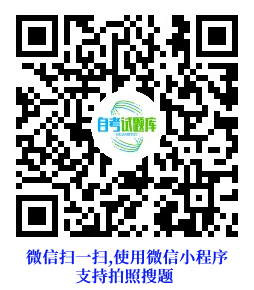注意:此页面搜索的是所有试题
题目内容
(国家开放大学计算机英语)
The Internet, then known as ARPANET, was brought online in 1969, which initially connected four major computers at universities in the southwestern US . The early Internet was used by computer experts , engineers, scientists, and librarians. There was nothing friendly about it. There were no home or office personal computers in those days, and anyone who used it, whether a computer professional or an engineer or scientist or librarian, had to learn to use a very complex system.
The Internet matured in the 1970.s as a result of the TCP/IP architecture. As the commands for E-mail, FTP , and telnet were standardized, it became a lot easier for non-technical people to learn to use the nets. It was not easy by today. s standards by any means, but it did open up use of the Internet to many more people in universities in particular. Other departments besides the libraries, computer, physics, and engineering departments found ways to make good use of the nets -- to communicate with colleagues around the world and to share files and resources.
In 1991, the first really friendly interface to the Internet was developed at the University of Minnesota. The University wanted to develop a simple menu system to access files and information on campus through their local network.
Since the Internet was initially funded by the government, it was originally limited to research, education, and government uses. Commercial uses were prohibited unless they directly served the goals of research and education. This policy continued until the early 1990.s, when independent commercial networks began to grow.
1. 2. 3. 4. 5.
Choose the best answer according to Passage.( 根据上文的内容选择正确的答案。)
1. How many computers were connected to the initial Internet in 1969 ? ( B )
A. Ten B. Four C. Twenty D. Three
2. Only A could use the early Internet.
A. computer experts, engineers, scientists, and librarians
B. any experts, engineers, scientists, and librarians
C. computer experts, engineers, scientists, and students
D. experts, engineers, and scientists in universities in US
3. The Internet became a lot easier for non-technical people to learn and use because of the common B .
A. commands B. protocols C. topologies D. architecture
4. The first really friendly interface to the Internet appeared with the introduction of a ( C ) system for files and information access.
A. computer B. operating C. menu D. application
5. Which statement is not true according to Passage C? ( D )
A. Many more people in universities began to use the Internet in the 1970s, but it wasn.t as user-friendly as today.s standards.
B. The restrictions to commercial uses changed as the independent commercial networks were not funded by the government.
C. Commercial uses were allowed for the early Internet if they directly served the goals of research and education.
D. The early Internet was logged in from home or office personal computers.
The Internet matured in the 1970.s as a result of the TCP/IP architecture. As the commands for E-mail, FTP , and telnet were standardized, it became a lot easier for non-technical people to learn to use the nets. It was not easy by today. s standards by any means, but it did open up use of the Internet to many more people in universities in particular. Other departments besides the libraries, computer, physics, and engineering departments found ways to make good use of the nets -- to communicate with colleagues around the world and to share files and resources.
In 1991, the first really friendly interface to the Internet was developed at the University of Minnesota. The University wanted to develop a simple menu system to access files and information on campus through their local network.
Since the Internet was initially funded by the government, it was originally limited to research, education, and government uses. Commercial uses were prohibited unless they directly served the goals of research and education. This policy continued until the early 1990.s, when independent commercial networks began to grow.
1. 2. 3. 4. 5.
Choose the best answer according to Passage.( 根据上文的内容选择正确的答案。)
1. How many computers were connected to the initial Internet in 1969 ? ( B )
A. Ten B. Four C. Twenty D. Three
2. Only A could use the early Internet.
A. computer experts, engineers, scientists, and librarians
B. any experts, engineers, scientists, and librarians
C. computer experts, engineers, scientists, and students
D. experts, engineers, and scientists in universities in US
3. The Internet became a lot easier for non-technical people to learn and use because of the common B .
A. commands B. protocols C. topologies D. architecture
4. The first really friendly interface to the Internet appeared with the introduction of a ( C ) system for files and information access.
A. computer B. operating C. menu D. application
5. Which statement is not true according to Passage C? ( D )
A. Many more people in universities began to use the Internet in the 1970s, but it wasn.t as user-friendly as today.s standards.
B. The restrictions to commercial uses changed as the independent commercial networks were not funded by the government.
C. Commercial uses were allowed for the early Internet if they directly served the goals of research and education.
D. The early Internet was logged in from home or office personal computers.
参考答案

